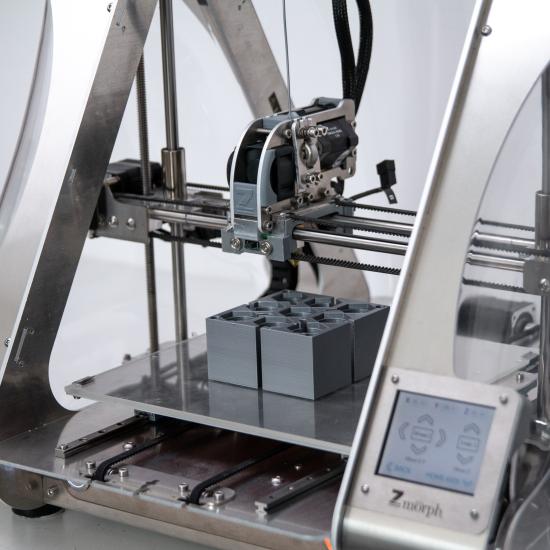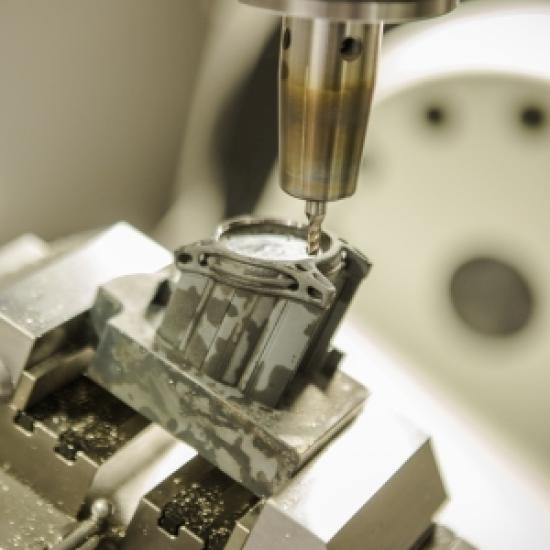Because the effect of digitisation projects on business results varies greatly, it is important to make the right choices. In this article, we highlight the digital tool with perhaps the greatest imaginable effect on operational processes: the product configurator.
Digitising office processes can greatly improve business results. Office processes typically account for between one-third and one-half of the lead time, and about a quarter of the cost. Office employees are the customer's first point of contact and strongly affect commercial success. Office procedures are by definition information processing processes, which makes them well-suited to further digitisation. Product configurators are often the missing links needed to unlock the full potential of digitisation.
Product configurators take on various tasks: they guide the customer through their selection process, generate quotations and automate order processing. Linking the product configurator to the back-office systems also makes it possible to automatically generate drawings and work preparations. Ideally, an incoming order is then processed fully automatically and the operator on the workfloor sees the order data, bills of materials, drawings and work preparation appear automatically without any human intervention.
In addition to the lower costs from automating the work, configurators offer many other advantages, including:
- Configurators prevent impossible configurations and missing information, avoiding time-consuming back-and-forth communication and quality complaints. As a result, the quality of the quotations also increases and there are fewer pricing errors.
- The lead times for preparing quotations and processing orders can shorten dramatically, sometimes from days to minutes. Apart from avoiding iterations due to incorrect information, two other factors contribute to this gain. Inexperienced sellers and dealers often create unnecessary 'specials' because they do not have a good overview of the complex range. The better structuring of the offer makes it easier to direct the customer to an existing solution. In doing so, the automation creates more time for processing the 'real' specials, so that these are also processed faster.
- Turnover can grow thanks to an improved customer experience (faster feedback, visualisation of the range, …) and because there is a larger sales reach when configurators are put online.
- As successful sellers, configurators can boost sales further by suggesting complementary products (cross-selling) or more expensive alternatives to the customer (upselling).
Studies confirm that product configurators have great potential to improve operating results, with, in some cases, an 800 percent return on investment. This study also shows that the impact is highly dependent on the company and that configurator projects can also fail. One study even concludes that 29 percent of the configurators are removed within a year.
There are various reasons for failed configurator projects: the project scope was too broad, the configurator was not accepted by the users, the chosen configurator software was unsatisfactory, development costs got out of hand, the configurator could not be maintained properly, ... Product configurators can also generate resistance because the automation is experienced as threatening. Research shows that this fear is largely unjustified. In only 6 percent of cases does a configurator lead to downsizing. Notably, 63 percent of the companies have additional recruitment as a result of implementing a configurator.
A strategic vision: a precondition for success
Product configurators can be used to improve the sales and order processing process of an existing range or can be part of a mass customisation strategy, deliberately broadening the range to appeal to more customers. In both cases, the product strategy must be well thought out to avoid failure. The product manager - the architect of the product range - plays a leading role in this. This is a role lacking in many companies. As a result, important decisions are left to chance and are just based on 'the customer wants it'. Just because a customer asks for something doesn't mean they need it. For example, we recently saw a bulk truck manufacturer that had improved its hatches. The customers continued to ask for the old hatches, which meant that the manufacturer had to produce both the old ones and the new ones. In reality, customers were somewhat overwhelmed by the complexity of the product range. For convenience, they therefore asked for the same types of truck as their old ones, which was misinterpreted as 'the customers still want the old hatches'.
A configuration project is not a one-off exercise, but has a lasting impact on business operations. The move towards a configure-to-order environment requires the product’s building blocks to connect seamlessly and to be widely used over a longer period. To be able to reap the benefits of a product configurator project over the long term, it is therefore essential to first develop a firmly-based vision. If this is not done, the complexity of the configuration projects will threaten to capsize it, or the configurator will prove unsustainable in the long term. To achieve a clear vision, the following questions, among others, must be answered: Which degrees of freedom and options are really important to the customer? Which options can best be dropped? Where do we draw the line between the configurable product and a special? To what extent do we want to allow non-configurable 'specials'?
Focus on the user
A product configurator should generate customer confidence and reduce perceived purchase risks. The user-friendliness of the configurator is crucial for this. The following elements contribute to this:
- Visualisation increases the customer's confidence in the configured product and can increase the conversion rate by 10-50 percent. The graphical possibilities of configurators vary greatly and, to a large extent, determine the cost price. The visualisation can range from easily-edited 2D images to photorealistic 3D renderings displayed in augmented reality. For example, the configurator of the Belgian bicycle manufacturer Ridley Bikes lets you use a smartphone to project the configured bicycle frame in your surroundings and walk around it.
Augmented reality in the Ridley configurator
(Source: Ridley Bikes)
- Dynamic pricing immediately shows customers how their choice affects the price, which avoids unpleasant surprises at the end of the configuration process.
- Offering starting points for the configuration via proposed 'default' values makes it easier to choose and reduces the customer's choice stress. This also lets you subtly steer the customer in a desired direction.
- Flexible navigation makes it easy for the customer to go back and make adjustments. It also makes it simple to compare different options and uses a progress bar how to show the customer how far they’ve got in the configuration process.
Product configuration as a starting point for digitisation
There is already a wide choice in product configurators available. Product configurators can be bought as a module within the ERP system, or as a third-party application which is then integrated with back-office systems. The costs associated with a configurator project can vary widely depending on the project scope. For the simplest configurators you can think in the range of about 5,000-10,000 euros a year in software costs, which makes them affordable for smaller companies.
As soon as a company has the necessary IT basics (such as an ERP system) and a configurable product, a product configurator is a good starting point for further digitisation, for three reasons. Firstly, a well-thought-out configuration project has a tangible impact on the business results. Secondly, a product configurator forces the company to think strategically, and, finally, using a configurator also avoids many operational problems. So any company with a configurable product should strongly consider implementing a product configurator.
Would you like to know more about the possibilities opened by digitisation and production optimisation? Then be sure to read the previous parts:
- Are digital work instructions really better than paper work instructions?
- How do you make a difference with digitisation?
(Source picture above: https://nl.dreamstime.com)
]]>





